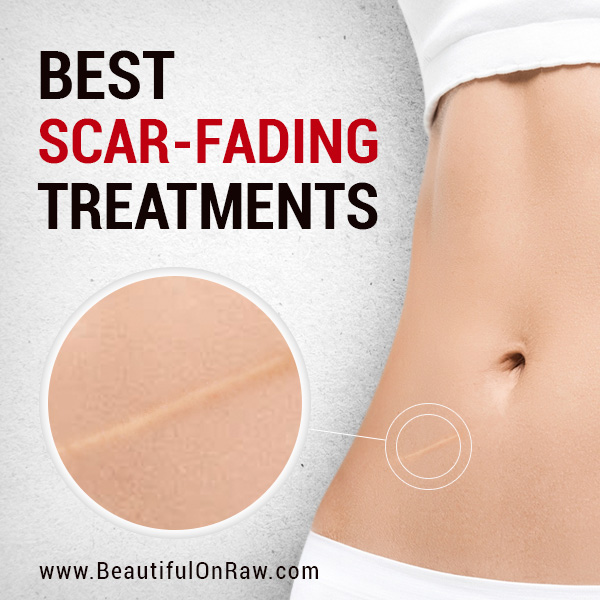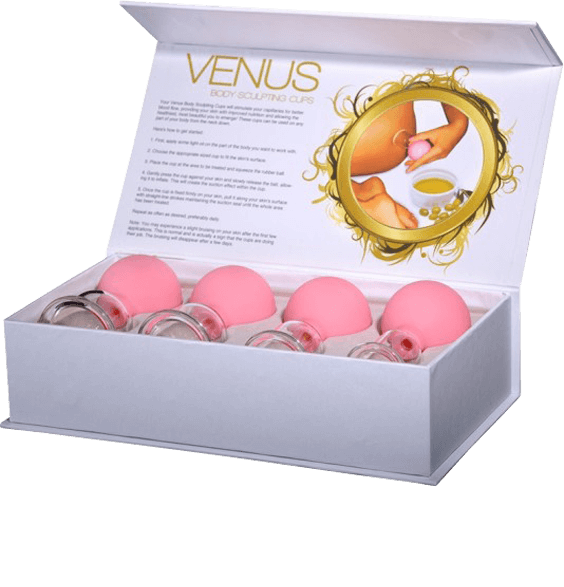Best Scar-Fading Treatments

When do you get to be an expert on scars? When you have a lot of them.
I have scars on my hips. They look like a bad seamstress stitched me up after surgery. They used to look far worse, making me avoid beaches. I also have puncture wound scars on my right leg after skeleton traction in my childhood and a scar from my elbow surgery. And I have a C-section scar. And I have also had to deal with a keloid recently. I had a lot of success in fading them all.
Why Do We Scar?
When the dermis is damaged—the deep, thick layer of skin—scars form. To fix the damage, the body makes new collagen fibers, which have different textures and colors than the surrounding skin. Thus, a scar is born. The wound’s size, depth, and location matter. Other relevant factors include the blood supply to the injured area, the direction of the wound, and any medications you’re taking. Your age, gender, and your ethnicity can also affect when and how badly you scar.
Types of Scars
Atrophic This type of scar is recessed, often because there’s damage to the skin’s underlying structure, leaving a sunken, discolored mark. The most common atrophic scars arise from acne, chicken pox, insect bites, surgery, and certain skin and tissue disorders.
Contracture If you’re scarred because of a burn, chances are you have this type of scar, which leaves skin tightened, lumpy, and disfigured.
Hypertrophic These scars appear because of excessive tissue that develops over skin openings caused by infections or wounds. Hypertrophic scars are like keloid scars in that they are raised, but hypertrophic scars only form on the areas of injury, and don’t spill over onto healthy tissue.
Ice Pick These deep, narrow, atrophic scars, which go well beyond the surface of the skin, and are actually former pores destroyed by severe acne. The scars are often many shades darker than surrounding skin, so are highly visible and hard to conceal.
Keloid These occur when your body has “repaired” skin beyond actual damage, leaving a raised, often angry-looking, discolored scar. Ever had a pimple you wanted to pop? Don’t! You can end up with a keloid formation. If you try to remove it in a dermatologist’s office, according to numerous internet testimonials there is a big chance, the keloid will come back uglier and bigger.
Stretch Marks. If you’ve been pregnant, or have experienced extreme, rapid weight loss, or have lost muscle mass because you stopped exercising, chances are you have stretch marks. These are skin tears, forming atrophic scars that first appear purple or dark pink, fading to a shiny silver tone. See Solutions For Stretch Marks.
Plenty of time and patience are what you you’ll need for just about any kind of scar treatment.
Laser Treatment. Lasers “resurface” the skin by precision removal of layer after layer of skin. New skin cells that form during healing offer a tighter, younger-looking epidermis. Lasers can damage skin tissue, good intentions notwithstanding. Is it for everyone? That depends on how well you’ll deal with the side effects of laser treatments.
Your doctor might prescribe antibiotics to prevent infection. Sedation may also be needed just before treatment. Count on being bandaged after your treatment, and on needing to clean treated areas up to five times a day. You’ll also need to apply an ointment or petroleum jelly to stop scabs from forming too early. Swelling is normal. Your doctor might prescribe steroids to counter swelling. Itching and stinging are also normal for up to three days after treatment, followed by skin drying and peeling up to a week later. Complete healing can take as much as three weeks, and the redness caused by treatment may not fade for three months.
The risks associated with laser scar treatments include burns and other heat-related injuries, infection, pigmentation changes, and even further scarring. Some patients are delighted with the results, while others aren’t. Complaints abound on the internet of larger pores, lines, and icepick scars. Associated costs average $250 per scar.
Old vr. New Scars
Does a scar’s age matter in treatment? It does! Newer scars respond better to holistic treatments than old scars. The best practical rule: Be very gentle with new scars.
New Scars Treatment
Organic Vitamin C Serum
Vitamin C is a treatment proven effective for lightening the dark pigmentation so often caused by scarring. If you’ve got a stubborn scar, vitamin C might be just what you need.
Cucumber
If you have sensitive skin, cucumber will hydrate your scar (and all of your skin) with no irritation. Simply peel the cucumber, cut in half, scoop the seeds out, and put the cucumber in a blender, reducing it to a paste. Apply the paste to your scar(s), leave on for 30 minutes, and then wash off with cool water.
Lemon Juice
Lemon juice is a natural bleach. You can apply the juice directly to the scar, leave on for 15 minutes, and then wash off. Remember that lemon juice will probably dry your skin, so be sure to apply moisturizer to the area after you’ve washed it off.
Organic Honey
Honey is a natural moisturizer and does wonderful things to and for the skin. Apply honey directly to the scarred area, cover with a bandage, and leave it on overnight. Wash it off the next morning with warm water.
Sandalwood Oil and a Carrier Oil
Sandalwood has long been known to offer skin-regenerating properties and, when mixed in equal parts with an appropriate carrier oil (such as coconut oil, olive oil, rose hip oil, jojoba oil, or castor oil, which can be found in my beauty store), can reduce the appearance of all types of scars.
Old Scars Treatment
When it comes to old scars—except raised scars—a cupping massage with lots of patience can produce marvelous results. My hips scars looked like an archaeological excavation site. I started at just 15 to 30 seconds. Then I gradually increased the time. Eventually, I was able to keep the cups on the scar for up to 15 minutes without any bruising. I kept on regularly, and now my hips are smooth, with barely visible satin-like stitches.
I’ve also learned to appreciate stationary cupping. That’s where you don’t slide the cup along but leave it in one place. Yes, at first you might bruise, but with each application you’ll experience less bruising. Now I don’t bruise at all, even when I leave a cup on my scar for 20 minutes. Don’t attempt this to start with or you'll develop blisters. I had this happen to me once when I fell asleep with cups on. Unpleasant, but still they healed in a week.
The cups you use will be pulling on fibrous connective tissue, making it longer, softer, smoother. I’ve experimented with cupping massage for many years. And I can say with confidence if you proceed gradually, cupping massage, as well as stationary cupping, cannot possibly hurt your skin.
When doing a cupping massage, you’ll need to use some oil. I’ve tried all the oils commonly advised for cupping massage—coconut, jojoba, grape, and lavender essential oil. None gives better gliding feeling than my night cream.
The Best Treatment for New Scars and Older Raised Scars.
What about new scars, and older raised scars? I believe the egg membrane method is especially effective. I wrote about it in this article: Raised Scar Treatment.
You can also get silicone sheets, hypertrophic and keloid, on amazon and in drug stores scars, which also work. I’ve seen people get results. But it takes months of daily application to see results and will cost a bundle—they’re relatively expensive. My opinion: They cannot beat egg membranes in cost and effectiveness.
Conclusion:
For old scars—again, except for hypertrophic and keloid scars—cupping (combined with time) is one of the best methods. Because the scar tissue isn’t fresh, you can be more aggressive in your treatment. But there is no such thing as an “instant fix,” when treating anything naturally.
Scars, please know, can never be “cured.” They never completely go away. But they can and will fade considerably, given dedication, consistency, and lots of patience on your part. If you have a scar, and it makes you genuinely unhappy, know you can fade it, no matter how ugly it looks now. And you can do it yourself!


